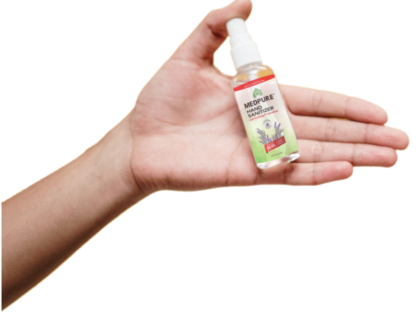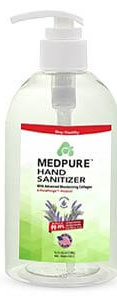COVID-19 Scan for Aug 26, 2020
 Massachusetts study details role of super-spreading events in COVID-19
Massachusetts study details role of super-spreading events in COVID-19
A new study by scientists in Massachusetts is highlighting the role that super-spreading events played in the spread of COVID-19 in the state.
In the study, published yesterday on the preprint server medRxiv and not yet peer reviewed, a team led by researchers from the Broad Institute of Harvard and MIT analyzed and sequenced 772 genomes from SARS-CoV-2 (the virus that causes COVID-19) nasopharyngeal samples collected by the Massachusetts Department of Health and Massachusetts General Hospital from Jan 29 to May 9. The samples, representing nearly all early confirmed cases in Massachusetts through Mar 8, came from many of the communities in and around Boston with the highest prevalence of COVID-19 and from two known super-spreading events: an outbreak at a skilled nursing facility and an outbreak at an international biotech conference.
In the outbreak at the skilled nursing facility, where 85% of residents and 37% of staff tested positive for COVID-19, 75 of the 83 genomes (90%) came from one virus lineage. There were two other introductions at the facility, but they did not lead to massive spread. There was also little onward transmission of these lineages from the nursing home.
In the other super-spreading event, the Biogen conference held on Feb 26 and 27, more than 90 cases were diagnosed in people who attended the conference or their contacts. Analysis of 28 of genomes from conference attendees revealed the presence of a single mutation (C2416T) not previously found in Massachusetts and likely introduced from a person from Europe who attended the conference.
The mutation, and a variant (G26233T), then spread extensively throughout the Boston area. Further analysis found the two mutations among the genomes from a COVID-19 outbreak in a Boston homeless shelter, with C2416T found in 105 of 193 genomes, and 54 of those also containing G26233T. C2416T was the most common lineage in the Boston area throughout the study period, accounting for at least 20% and as many 40% of later cases in the dataset, and the C2416T/G26233T variant was subsequently exported to other US states and other countries, including Australia, Sweden, and Slovakia.
“The conference superspreading event likely had an outsized effect because it occurred early in the pandemic,” the authors wrote. “Extensive spread within the Boston area likely then contributed to the rise in frequency of C2416T and C26233T in the United States and worldwide.”
Aug 25 medRxiv study
Household case contacts at 10 times the risk of COVID-19, review finds
Household contacts of people infected with COVID-19 are 10 times more likely than non-household contacts to contract the virus, a systematic review and meta-analysis published yesterday in the Journal of Infection shows.
Chinese researchers who analyzed data from 24 published retrospective cohort, prospective, and case ascertainment studies from China, South Korea, the United States, and Germany conducted from Jan 1 to Mar 31 also concluded that SARS-CoV-2, the virus that causes COVID-19, is much more easily spread in households than SARS-CoV-1 (severe acute respiratory syndrome virus, which causes SARS) and MERS-CoV (Middle East respiratory syndrome coronavirus, which causes MERS), which complicates home isolation of COVID-19 patients.
Compared with children, adults are at nearly four times the risk of becoming infected with COVID-19. Asymptomatic and presymptomatic cases were estimated to make up 53% of COVID-19 spread.
Overall secondary household attack rates ranged widely, from 4.6% to 90%, with a pooled rate of 27%. In the six studies that stratified secondary attack rate by age, attack rates were 15.7% to 47.6% in adults and 5.2% to 26.9% in children. In the 10 studies that reported secondary attack rates in non-household contacts, the attack rate was 0.1% to 28.8%.
In comparison, secondary household attack rates of SARS-CoV-1 were reported as 6.2% to 10.2% in Beijing, Hong Kong, Toronto, and Singapore. A Saudi Arabian study reported the secondary attack rate of MERS-CoV as 4%.
The authors noted a previous study that reported that up to 80% of COVID-19 clusters in China were within families. “All these challenge the value of home isolation for COVID-19 patients, as it may put household members at high risk of infection, propagating the disease,” they wrote. “When the hospital isolation of all cases becomes unfeasible, other sheltering facilities…might be a better option.”
Aug 25 J Infect research letter
Fraudulent COVID-19 posts on social media sites rise in pandemic
A study yesterday in the Journal of Medical Internet Research (JMIR) Public Health and Surveillance shows that fraudulent posts advertising fake cures, questionable medical advice, and unapproved testing kits for COVID-19, have flourished on Twitter and Instagram in the last several months.
Researchers from the University of California San Diego School of Medicine identified 1,271 tweets and 596 Instagram postings that included fraudulent COVID-19 product, testing, and other scams from February through May. All the postings were deemed as having significant risk to the consumer and were identified using big data and machine learning.
In a press release on the study, the authors said the posts came in two waves, with the first focused on unproven products to prevent or cure the virus, and the second focused on fake testing kits. They warned that a third wave of fake pharmaceutical treatments is now becoming more visible.
“Active surveillance of illegal COVID-19 digital marketplaces is needed, along with the use of visualization tools that can provide needed data intelligence to understand the constantly changing dynamics of this infodemic threat,” the authors concluded in the study.
Aug 25 JMIR Public Health Surveill study
Aug 25 UC San Diego press release
Lung transplant may help COVID patients with no other hope for recovery
Lung transplantation may be a feasible option for patients who otherwise would not recover from COVID-19, according to a case report describing a 44-year-old Austrian woman whose lungs were destroyed by the novel coronavirus.
The report, published yesterday in The Lancet Respiratory Medicine, details the clinical arc of the patient, who was hospitalized on Mar 21 and transferred to the intensive care unit (ICU) on day 6 because of acute respiratory distress. Treatment with the immunosuppressive drug tocilizumab, the antiviral lopinavir, immune-boosting immunoglobulins, and use of prone positioning were tried to no avail.
On day 20, the patient required multiple blood transfusions because of spontaneous bleeding from her right lung that didn’t require treatment. On day 32, she was administered plasma from a recovered COVID-19 patient to confer antibodies, which was of no benefit.
On day 48, she was transferred to the Medical University of Vienna to be evaluated for lung transplantation. Computed tomographic angiography of her lungs showed widespread dead tissue and blood clots and damage to the lower lobes and small- and medium-sized pulmonary arteries, suggesting infection with another pathogen. Candida albicans was detected on blood culture, and lab values indicated sepsis-linked liver dysfunction.
The patient remained positive on COVID-19 reverse transcription polymerase chain reaction testing, but not on viral culture, throughout treatment. On day 58, she received a double-lung transplant, a challenging process because of the infection-induced fragility of her bronchus and blood vessels.
The patient recovered, and she had no evidence of transplanted lung dysfunction 72 hours after surgery. Ten days later, she tested negative for COVID-19. At day 144, she remained well.
The authors said that critical patient condition, single-organ dysfunction, widespread lung damage, bacterial infection in addition to COVID-19, and imminent muscle loss should be considered indications for early lung transplantation.
“Despite the success of this case, it is important to emphasise that lung transplantation is an option for only a small proportion of patients with COVID-19,” the authors wrote. “Many patients with COVID-19 who are admitted to the ICU are older than the acceptable age limit for the procedure or have other comorbidities that might preclude them from lung transplantation.”
Aug 25 Lancet Respir Med case report

The CoviScience Team is a group of professionals dedicated to helping our Pandemic torn nation get back to normal. We all recognize that helping each other to find, analyze and select home, office and educational solutions can be the difference between thriving and merely surviving. We encourage every0ne to participate in our online community by contributing, sharing and commenting. Stay Safe. Stay Healthy and Stay Happy. ~ The CoviScience Team.
Recommended Posts

WHO enlists more COVAX participants, clears 2nd rapid test
October 5, 2020

5 Back-to-School Safety Tips During the COVID-19 Pandemic
August 27, 2020




